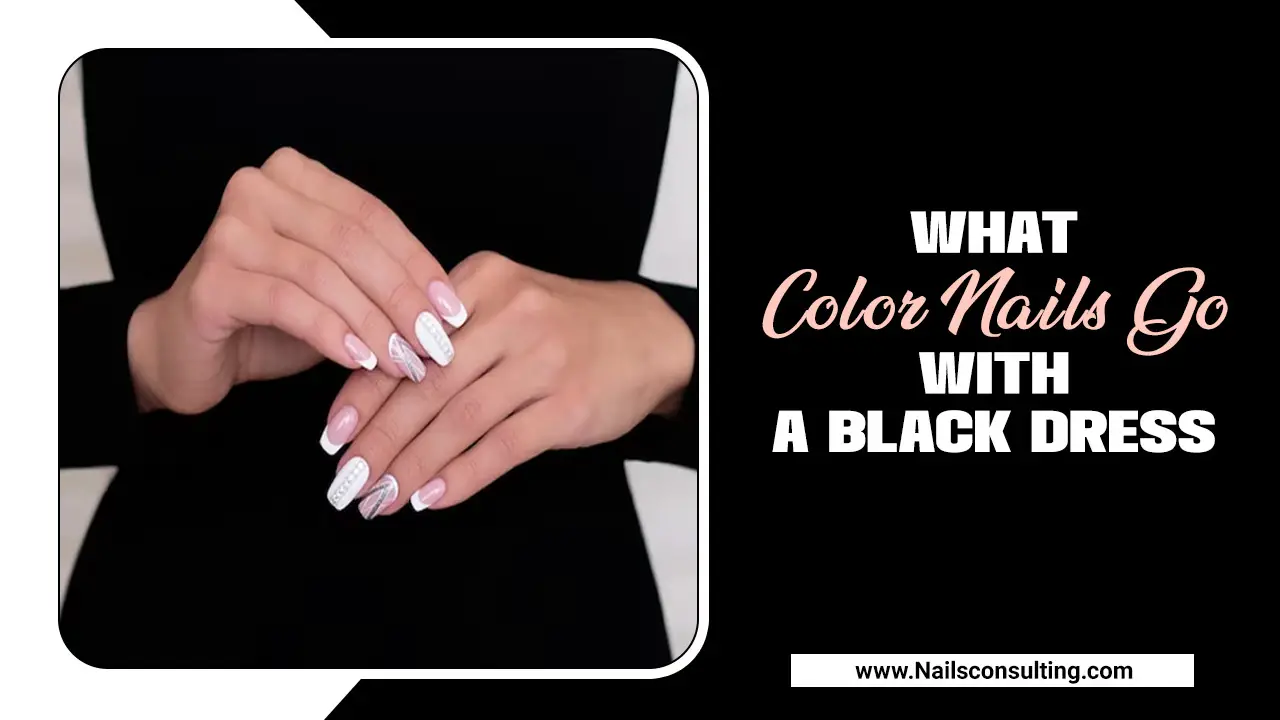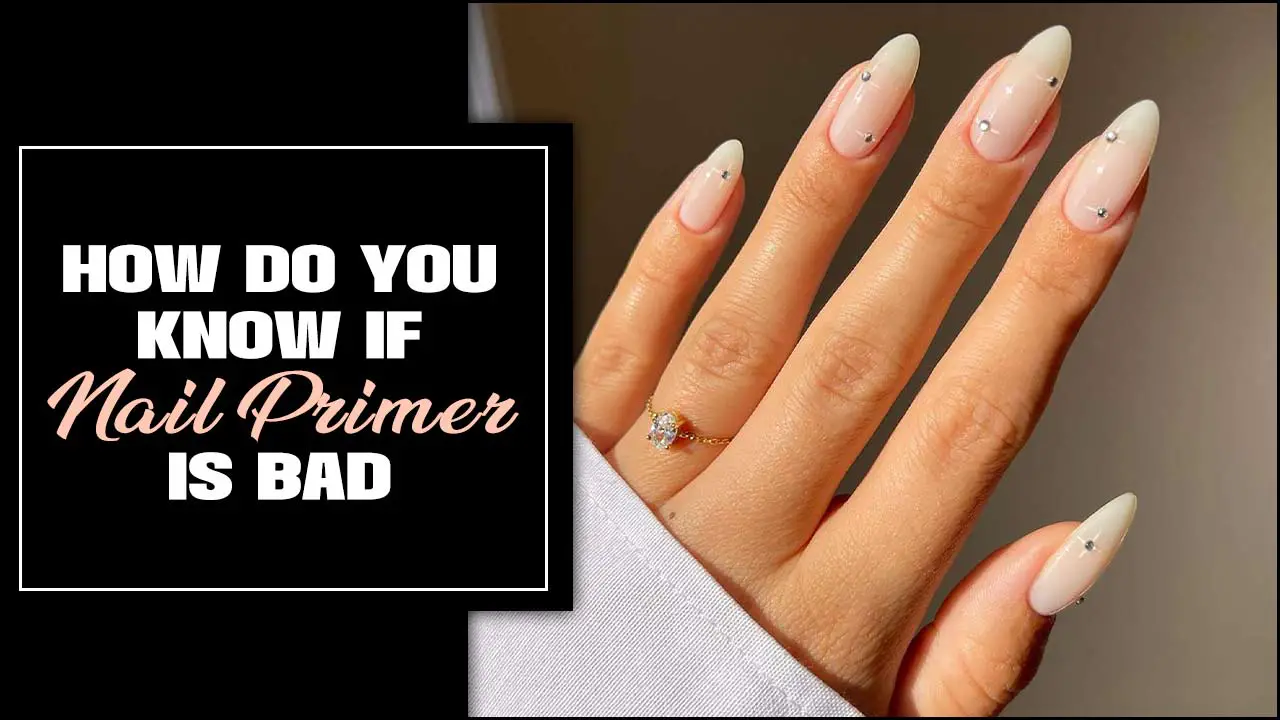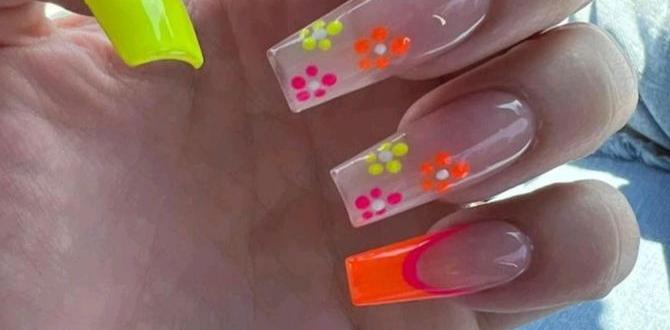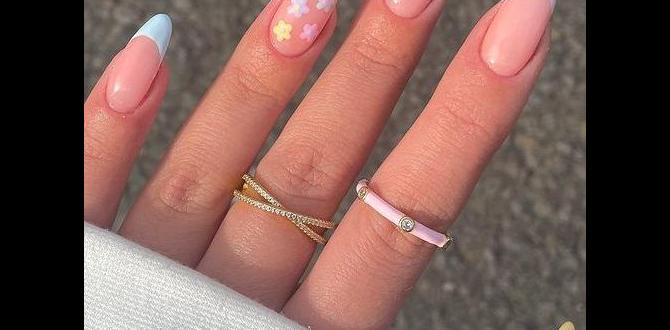Discover the best top coat types to make your manicures last longer. From chip-resistant formulas to gel-like finishes, find the perfect top coat to seal in your color, add shine, and protect your nails for days of gorgeous wear.
Ever spent time perfecting a beautiful nail color, only to have it start chipping a day or two later? It’s super frustrating, right? You want your manicure to look fresh and fabulous for as long as possible, but sometimes it feels like a losing battle. Don’t worry, because the secret to long-lasting, gorgeous nails often lies in one crucial step: the top coat! Choosing the right one can make all the difference between a mani that lasts a weekend and one that stays stunning for a full week or more.
In this guide, we’ll break down the different types of top coats available, what makes them special, and how to pick the perfect one for your nail goals. Get ready to say goodbye to premature chips and hello to enduring, beautiful nails!
Why a Top Coat is Your Manicure’s Best Friend
Think of a top coat as the protective shield for your nail polish. It’s the final layer that seals everything in, offering several amazing benefits:
- Prevents Chipping and Smudging: This is the big one! A good top coat creates a durable barrier that guards your polish against everyday wear and tear, like typing, opening cans, or just life in general. It also helps set the polish, making it less likely to smudge right after application.
- Adds Shine and Depth: Most top coats impart a beautiful glossy finish that makes your nail color look richer and more vibrant. Some even offer a super high-shine, almost “wet look.”
- Smooths Imperfections: If your polish application isn’t perfectly smooth, a top coat can help to even out the surface, making your manicure look professionally done.
- Extends Manicure Life: By protecting against damage and wear, a top coat significantly extends how long your manicure will look its best.
Selecting the right top coat can elevate your DIY manicures from good to absolutely spectacular, giving you that salon-fresh look that lasts.
Understanding Different Top Coat Types
The world of top coats can seem a bit overwhelming at first, with so many options out there! But don’t get discouraged. Each type is designed with specific benefits in mind. Let’s explore the most popular ones:
1. Standard/Quick-Dry Top Coats
These are the workhorses of the top coat world, readily available and often the most budget-friendly. Quick-dry formulas are a game-changer for busy bees!
- What they are: These are traditional liquid formulas designed to dry faster than regular nail polish. They create a protective layer and add shine.
- Pros:
- Fast drying time, reducing the risk of smudges.
- Widely available and affordable.
- Easy to apply.
- Good for everyday wear.
- Cons:
- May not offer the extreme durability or chip resistance of other types.
- Shine might not last as long as some premium options.
- Can sometimes cause nail polish to shrink or pull at the edges if applied too thickly or too soon after the color coat.
- Best for: Beginners, quick touch-ups, everyday manicures where super long wear isn’t the absolute priority, and those on a budget. Brands like Essie’s Good to Go and Seche Vite Dry Fast Top Coat are popular examples.
2. Gel-Like/Hybrid Top Coats
Want that smooth, plump, high-shine look of a gel manicure without the UV lamp? Gel-like top coats deliver!
- What they are: These formulas aim to mimic the finish and thickness of traditional gel polish but dry naturally with air. They often contain ingredients that create a tougher, more flexible film.
- Pros:
- Achieve a beautiful, high-gloss, “plump” finish that looks very professional.
- Offer better chip resistance and longevity than standard top coats.
- Smoother application for a flawless look.
- Cons:
- May take slightly longer to fully cure than standard quick-dry top coats.
- Can be a bit more expensive than basic options.
- Some users find they thicken up in the bottle more quickly.
- Best for: Anyone seeking a high-shine, more durable finish than standard polish, without the commitment of gel or the need for a UV/LED lamp. Look for terms like “Gel-like,” “Hybrid,” or “3-in-1” on the bottle.
3. Gel Top Coats (for UV/LED Curing)
If you’re serious about extreme longevity and a flawless finish, gel top coats are the way to go, but they require a bit more equipment.
- What they are: These are part of a gel polish system that requires curing under a UV or LED lamp to harden. They create an incredibly durable, high-shine, chip-proof surface.
- Pros:
- Unmatched longevity – manicures can last 2-3 weeks without chipping.
- Incredibly strong and resistant to scratches and wear.
- Superior high-gloss finish that doesn’t dull over time.
- Perfect for intricate nail art that needs to be sealed securely.
- Cons:
- Requires a UV or LED lamp for curing.
- Requires a base coat and often a cleanser (99% isopropyl alcohol) to remove the sticky inhibition layer.
- Removal is more involved, often requiring soaking in acetone.
- Best for: Those who want a manicure that lasts for weeks, are willing to invest in a lamp and other gel products, and want the most durable finish possible. Always follow the manufacturer’s instructions for application and curing times.
4. Matte Top Coats
Love a sophisticated, modern look? Matte top coats transform any polish into a velvety, non-shiny finish.
- What they are: These top coats are specifically formulated to absorb light rather than reflect it, creating a flat, modern, matte appearance.
- Pros:
- Achieves a chic, modern matte finish.
- Can be used over any polish color for a completely different look.
- Hides minor imperfections in polish application.
- Cons:
- May not offer the same level of chip resistance as glossy top coats.
- The matte finish can sometimes wear off or become shiny in spots after a few days.
- Can sometimes look streaky if not applied evenly.
- Best for: Experimenting with different textures, creating unique nail art effects (like a tuxedo finish), and achieving a sophisticated look.
5. Strengthening/Ridge-Filling Top Coats
If your nails are naturally weak, brittle, or have uneven surfaces, these can be your secret weapon.
- What they are: These top coats are enriched with ingredients like vitamins, calcium, or proteins designed to nourish and fortify the nail. Ridge-filling versions contain micro-fillers to smooth out any bumps or ridges on the nail plate.
- Pros:
- Helps to strengthen weak or brittle nails over time.
- Smooths out the nail surface for a flawless canvas.
- Provides a protective layer and shine.
- Cons:
- May not offer the fastest drying time.
- Durability might be less than dedicated chip-resistant top coats.
- Results for strengthening take consistent, long-term use.
- Best for: Those with naturally weak, brittle, or ridged nails who want to improve nail health while also getting color protection and shine.
Choosing the Best Top Coat for Your Needs
With all these options, how do you pick the “best” one? It really depends on your priorities and what you want to achieve with your manicure!
Here’s a simple breakdown to help you decide:
| Your Goal | Recommended Top Coat Type | Key Benefits |
|---|---|---|
| Fastest Drying, Budget-Friendly | Quick-Dry Top Coat | Quick application, smudge protection, affordable. |
| High Shine, Salon Look (No Lamp) | Gel-Like/Hybrid Top Coat | Plump finish, better chip resistance, intense gloss. |
| Ultimate Longevity (2+ Weeks) | Gel Top Coat (with lamp) | Extreme durability, chip-proof, lasting glossy finish. |
| Sophisticated, Modern Finish | Matte Top Coat | Velvety texture, unique look, versatile. |
| Strengthening & Smoothing | Strengthening/Ridge-Filling Top Coat | Improves nail health, smooths surface, adds protection. |
Consider what’s most important to you: is it speed, longevity, a specific finish, or nail health? Often, having a couple of different types on hand is ideal – a quick-dry for everyday and a gel-like or gel for when you want your mani to last!
The Art of Application: Maximizing Your Top Coat’s Potential
Even the best top coat won’t perform miracles if it’s not applied correctly. Follow these steps for a flawless, long-lasting finish:
- Start with a Clean Canvas: Ensure your nails are clean, dry, and free of any old polish or oily residue. Use a nail polish remover if needed.
- Apply Your Color(s): Apply your chosen nail polish color in thin, even coats. Allow each coat to become mostly dry to the touch before applying the next. Usually, two thin coats are best for opaque coverage.
- The Seal – Crucial Step!: This is where the magic happens for longevity. Gently wipe most of the polish off the brush onto the neck of the bottle. Then, apply a thin, even layer of your top coat. Crucially, brush the top coat all the way to the free edge (the tip) of your nail, and cap it. This means brushing a tiny bit of top coat over the very edge. This seals the polish in and prevents chipping from the tips.
- Work Quickly: Avoid going back over areas multiple times once the top coat starts to set, as this can cause streaks. Apply it swiftly and smoothly.
- Allow Adequate Drying/Curing Time:
- Standard/Quick-Dry/Gel-Like: These air dry. Give them at least 5-10 minutes to dry to the touch, and ideally longer (30 minutes to an hour) before engaging in strenuous activities or going to bed to prevent dents and smudges. While they “dry” faster, they can take longer to fully harden.
- Gel Top Coats: These MUST be cured under a UV or LED lamp according to the manufacturer’s instructions. This usually involves 30-120 seconds per nail.
Remember that even with perfect application, regular wear and tear will eventually affect any manicure. Adding a thin layer of top coat every 2-3 days can help refresh the shine and add an extra layer of protection, really boosting your manicure’s lifespan!
Nail Care Tips for Enhanced Longevity
Your top coat is powerful, but supporting it with good nail care habits will make your manicures practically invincible!
- Hydration is Key: Keep your nails and cuticles hydrated with cuticle oil or a good hand cream. Dry, brittle nails are more prone to breakage and chipping. Applying oil daily, especially before bed, can make a huge difference. For more on cuticle care, check out the NHS guide to nail health which offers excellent general advice.
- Wear Gloves: Protect your manicures (and your skin!) when doing household chores like washing dishes, cleaning with harsh chemicals, or gardening. Gloves are your manicure’s best friend against water damage and abrasive surfaces.
- Avoid Using Nails as Tools: Resist the urge to use your nails to scrape, pry, or open things. This is a recipe for chips and breaks.
- Gentle Removal: When it’s time to switch polishes, use an acetone-based remover (if you’re not using gel) and don’t aggressively scrub or peel. Soaking your nails for a few minutes often makes removal much easier.
- Buff Wisely: If you use a buffing block to smooth your nails, do so gently and infrequently. Over-buffing can thin the nail plate, making it weaker.
Pro Tip for Gel-Like and Gel Top Coats: Some formulas recommend applying a thin layer of cuticle oil after the final cure (for gel) or once fully dry (for gel-like) to boost shine and prevent the nails from feeling brittle.
Troubleshooting Common Top Coat Issues
Sometimes, things don’t go perfectly. Here are a few common problems and how to fix them:
Why is my top coat shrinking my polish?
This often happens with quick-dry formulas. Try applying the top coat more thinly and ensure your color coats are sufficiently dry first. Also, ensure you are capping the free edge of the nail to seal it all in.
My top coat is streaky or bumpy. What did I do wrong?
This can be due to applying too much pressure with the brush, not having enough product on the brush, or trying to smooth out a polish that’s already too dry. Ensure your color coats are smooth. When applying the top coat, use gentle, even strokes. If using a quick-dry or gel-like formula, don’t overwork it as it starts to set.
My gel top coat isn’t shiny after curing.
This usually means the inhibition layer (the sticky residue) wasn’t properly removed or the nail wasn’t cured long enough. Make sure you are using a cleanser (99% isopropyl alcohol is common) to wipe away that tacky layer after curing. If that doesn’t work, try curing for a longer period. Ensure your lamp is functioning correctly; older bulbs can lose power.
My top coat lost its shine quickly.
This can happen with standard top coats or even some gel-like formulas, especially if exposed to harsh chemicals or excessive friction. Regularly reapplying a thin layer of top coat can help maintain shine. For gel, proper curing is essential for lasting shine.
Can I layer different types of top coats?
Generally, it’s best to stick with a system. For example, if you’re using gel base and color, use a gel top coat. If you’re using regular polish, use a regular or gel-like top coat. Layering different types, especially mixing regular polish top coats with gel products, can lead to peeling, lifting, or improper curing and isn’t recommended.
Frequently Asked Questions (FAQ)
What is the difference between a gel top coat and a regular top coat?
A regular top coat air dries and provides a protective layer and shine. A gel top coat needs to be cured under a UV or LED lamp to harden, creating a much more durable, long-lasting, and high-gloss finish that resists chips and scratches for weeks.
How often should I reapply top coat to my regular polish?
To refresh and add protection, you can apply a thin layer of top coat every 2-3 days. This helps maintain shine and prevent chips, extending the life of your manicure.
Can I use a gel top coat over regular nail polish?
No, this is generally not recommended. Gel top coats require UV/LED curing to harden and bond properly. Applying it over regular polish, which air dries, will likely result in a wrinkled, improperly cured, or easily peeling finish.
What does “capping the edge” mean for top coat application?
“Capping the edge” means applying a thin stroke of top coat along the very free edge (the tip) of the nail. This seals the polish color and prevents chipping from the nail tips.
Are gel-like top coats the same as gel top coats?
No. Gel-like top coats mimic the look and feel of gel polish (high shine, thicker consistency) but air dry. Gel top coats are part of a gel system and must be cured under a UV or LED lamp to harden and achieve their maximum durability.
Can top coat make my nails stronger?
While standard





